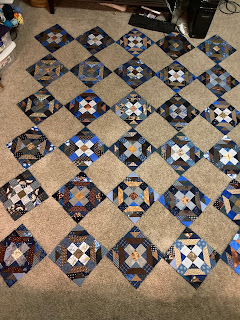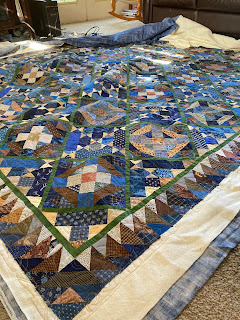For Quarta's 21st birthday, we had our nails done, dressed in pink and went to see the Barbie movie. I had avoided listening to reviews beforehand; I was not particularly looking forward to it because despite avoiding reviews, I could pick up on the buzz that was pegging this as a radical feminist manifesto ("poisoning the well" would not be an exaggeration). But I was pleasantly surprised. And yet, conflicted. Which is perhaps what director Greta Gerwig intended. I respect her previous work enough to give her the benefit of the doubt... and she has brought forth something I wouldn't have thought possible: a Barbie comedy... with depth.
I didn't play with Barbies growing up. I read Nancy Drew instead. I don't consider myself a feminist and never have; if pressed, I'd say I'm a Christian Classical Humanist. I was mildly surprised to see Barbie brought forward as an icon of feminism at all; that is a very 21st century rewrite of a 20th century marketing strategy that seemed designed more to promote materialism and capitalism aimed at children (must buy all the accessories!!) Also, Barbie was always shallow to me, and self-absorbed in a way that I disliked more as I grew older; she was the stereotypical "cheerleader type" who was the arch-enemy of us smart/awkward girls. Maybe Mattel made Doctor Barbie and Politician Barbie, but I certainly don't remember them featuring prominently, or at all, in the Saturday morning ads. Or maybe, my mother was skeptical about the advisability of Barbie as a role model for me until I was old enough that, when I finally did buy one, I developed a slight aversion to Barbie all on my own. Because I had my loyalties, and they were to Nancy Drew. So, I was going into this prepared to be a bit cynical... and Barbie surprised me by being a bit cynical back, but with a core of human-like compassion that elevates the story above fluff.
Toy Story taught us that a movie about a child's playthings could have great emotional depth and be appropriate for all ages. I thought at first this was a pink-flavored riff on Toy Story. But there, the toys unquestionably serve their kids and rigorously obey the rules of their world when kids are present, only taking on a life of their own when no humans are around. Here, Barbie herself, played to blonde perfection by Margot Robbie, begins a human-like quest for self-actualization when she wakes up one morning with flat feet and thoughts of death.
Stereotypical Barbie, after this sudden awareness of her mortality, seeks help from Weird Barbie (Kate McKinnon), an outcast who resembles what happened to my sisters' Barbie when they tried to turn her into Ken. She is told she needs to leave Barbie Land and go to the real world to find her girl, because she is being affected by her girl's thoughts. So Barbie sets off using all the pink modes of transport available to her... and her counterpart Ken, played by Ryan Gosling, stows away until it's too late to leave him behind. When they reach the real world, Barbie goes into Nancy Drew mode to find out what has caused the sudden self-awareness. It's a quest for the meaning of her life, and ultimately strikes the viewer as religious in nature.
Barbie infiltrates Mattel headquarters, which is in this setting run by an all-male board designed to produce a sense of vast unfairness in the audience and seems a bit of a cheap shot... until you realize that Mattel authorized this movie and will profit from it handsomely. She finally finds her girl (not quite the first one she thought it was), who is also dealing with thoughts of death, but who has some wise advice to give about Barbie's fears: "That's life. It's all change." To which Barbie responds, "That's terrifying."
While fleeing from Will Ferrell and numerous dark-suited executives who are threatened by her intrusion into the "real" world, Barbie meets her creator, Ruth, played sweetly by Rhea Perlman. Her quest to the "real" world awakes in her a need to become real herself and find meaning by transforming from a perfect doll to a flawed real woman. At this point I realized this was a story more like Pinocchio, or the Velveteen Rabbit.
Meanwhile, Ken is discovering that men in the real world have more agency than the Kens in Barbie Land, where Ken is basically an accessory to Barbie and his only job description is "beach." So, he sets out back to Barbie Land to introduce the concept of patriarchy to the other Kens. When this news reaches Barbie, she enlists the help of the America Ferrera's character and her daughter. They have a little hesitancy about leaving everything to go to Barbie Land, but they decide that Dad will be fine without them for a bit, as he is practicing Spanish on Duolingo.
The battle of the sexes back in Barbie Land is a little over-the-top... but then, this is a comic movie about a doll developing self-awareness so... I took it as comedy. You might cry at parts though.
Barbie is appropriate for older children, but not really for the 8-10 and under set. It has a great deal of irony that will just be confusing to young children and adults who don't fully process irony. And because it posits a "Barbie Land" where women rule and men are just ornamental beach bums, you shouldn't inflict it on men or boys unless they come willingly. (I mean, give Ben Shapiro a break, of course he's going to trash the movie if he was forced to watch it. I would have done the same if I had been forced to watch Rambo.) Others have criticized the symbolism of little girls smashing their baby dolls in the first scene as being a metaphor for abortion, but I wonder if they've ever actually seen little girls play with dolls, because that part seemed humorous to me. Oh yes, and Doctor Barbie was a ringer. Again, I'd caution against ignoring the PG-13 rating.
My mother would have disliked the fact that the movie portrayed most of the men as buffoons, like too many cartoons and sitcoms of the 20th century. And my harshest criticism would be that Ryan Gosling's Ken was not given the same opportunity for character development. Maybe, there should be a sequel giving Ken that opportunity. I think it would be great if Mel Gibson directed it.
















